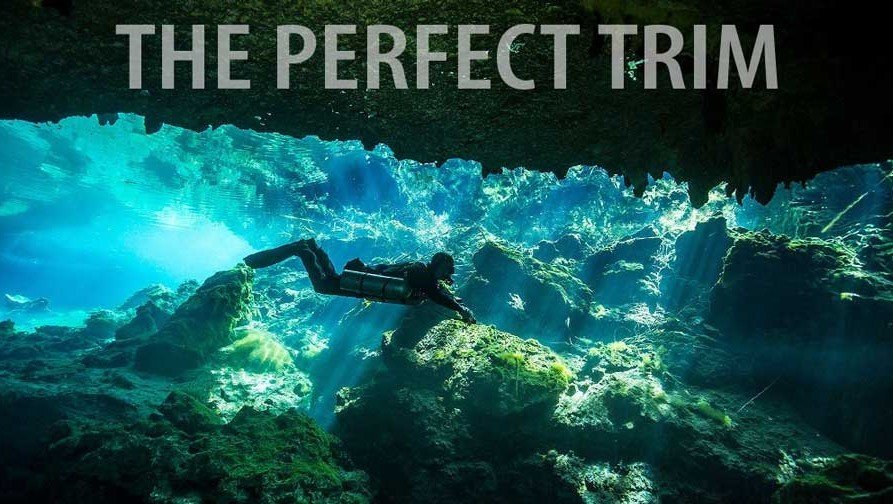by Lauren Kieren
Keep your head up, look forward! Stop slouching! Pull your shoulders back! Believe it or not, this is not your mother or grade school teacher reminding you to perfect your body posture and look presentable. However, they were on to something regarding the importance of doing so… at least for diving applications.
Body position and posture, often referred to as “trim” in the diving community, is just as critical underwater as walking upright is on land. It’s very common to dive out of trim without realizing it (unless you’re reminded, or have been trained on corrective actions) if it was not taught in the entry level scuba diver course.*
Now you might be wondering… why is diving in trim important? It’s not all about the looks and being presentable, though diving in trim does look pretty cool. Ideal trim allows for minimal water resistance against your every movement and in turn decreases your air consumption rate by reducing your work load. Also, it protects the environment by reducing the impact of fin thrust by shifting the direction of water flow straight back versus downwards; and opens up your field of view which increases overall awareness, communication and more.
So how can you achieve ideal trim? Start with these simple tips and tricks on body positioning:
HEAD BACK / LOOK FORWARD / ARMS OUT
Keep your head back and your eyes forward. Bring your arms out in front of you and let your hands meet in the middle. This position streamlines your shoulders, arms, and hands in a V-shape and it also allows your personal dive computer (PDC) to be in your field of view if it is wrist mounted. Imagine a speedometer while driving a car. You don’t stare at it the entire time you are driving, your eyes are on the road and your surroundings but it’s always in your field of view to offer awareness on how fast (or slow) you are driving. The importance of having your PDC positioned in your field of vision cannot be overstated. You must maintain awareness of your depth, time, and nitrogen loading during all portions of the dive.
SHOULDERS BACK / LOWER BACK ARCHED
Open your chest, push your shoulders back, and arch your lower back. This may seem uncomfortable in the beginning; however, with consistency, practice and experience, muscle memory will kick in allowing this position to become more natural and comfortable.
KNEES IN LINE WITH YOUR TORSO / FLEX THOSE GLUTES!
Flexing your glutes aides with keeping your knees up and in line with your torso. Picture yourself laying flat on the ground with your knees bent at a 90° angle behind you… this is the position you are striving for to improve balance and create a streamlined position. This will help reduce the surface area you are pushing through the water and improve efficiency. The easier you move through the water, the less effort it takes to propel you, reducing the amount of gas you consume on a dive.
FINS FLAT (while hovering)
Keeping your fins flat (parallel to the surface or bottom contour), by flexing your ankles while hovering, helps stabilize your lower body, reduces the urge to kick, and increases your overall control.
After practicing these tips and tricks, you may have to adjust your tank position and equipment configuration to find a better center of gravity in the water. There are times when you will naturally drop out of trim for various reasons but making a conscious effort to strive for this position will allow it to become natural in time. Remember, practice makes better! It’s not all about being pretty; it’s about improving your proficiency while diving.
Contact your local SDI Dive Facility to work with a qualified instructor on guiding you through equipment adjustments if necessary. Ask about the SDI Advanced Buoyancy course to further improve your diving methods, body positioning, and to challenge your buoyancy skills.
*For the purpose of this text, we are to assume the diver understands basic buoyancy principles and buoyancy control. The objective of this article is to discuss ideal body positioning, how to accomplish ideal trim while scuba diving, and challenge divers to try new methods to improve their diving techniques.
To find out more about International Training, visit www.tdisdi.com.
















 The diving world thrives on passion and adventure, but for many dive store owners, the financial and operational challenges can be as deep as the ocean.
The diving world thrives on passion and adventure, but for many dive store owners, the financial and operational challenges can be as deep as the ocean.

























